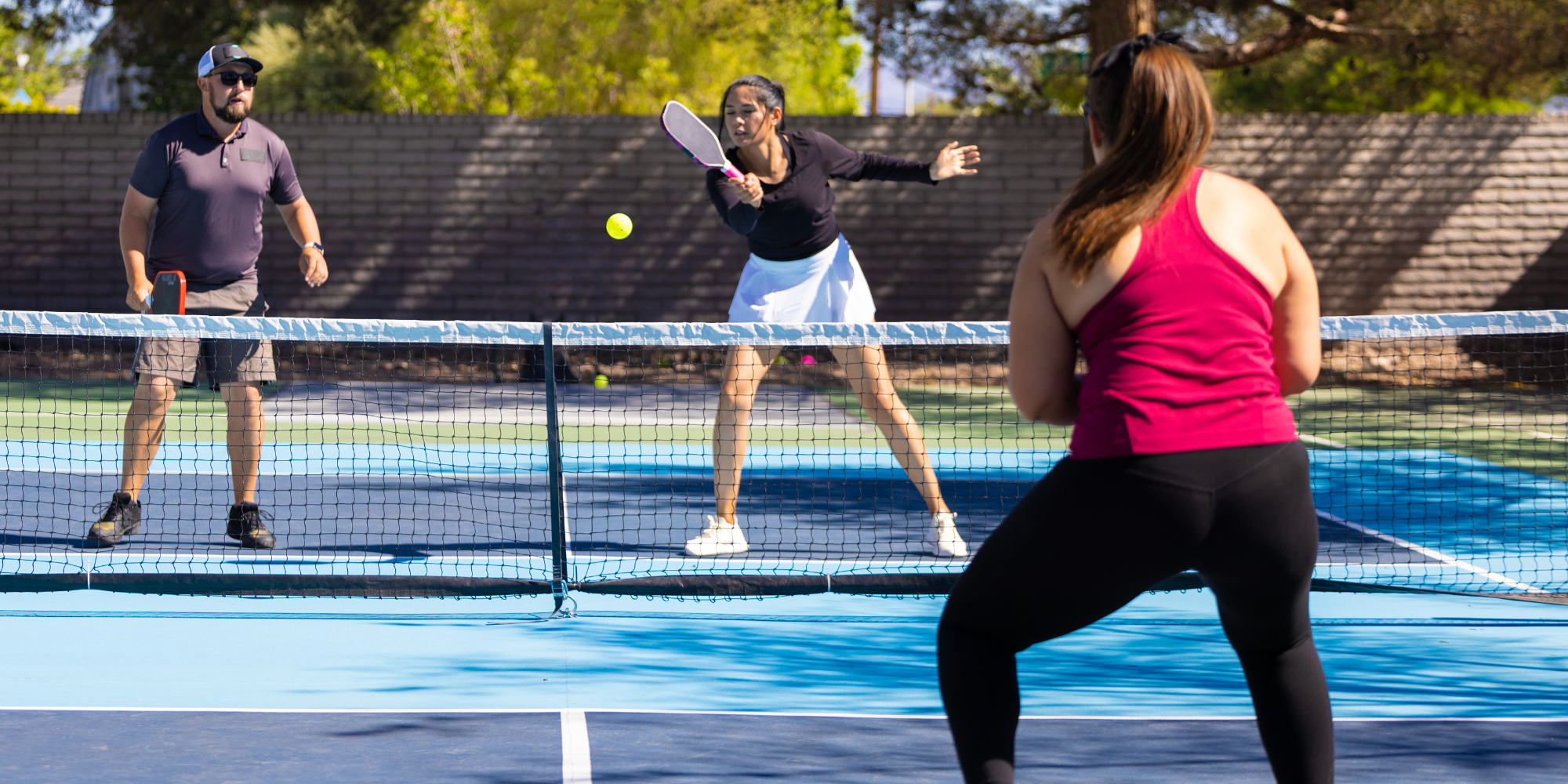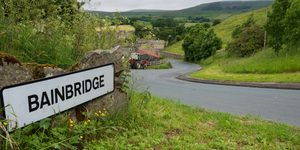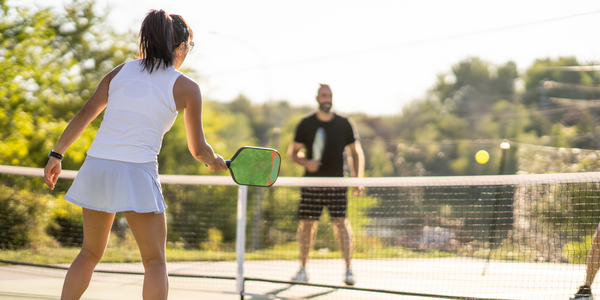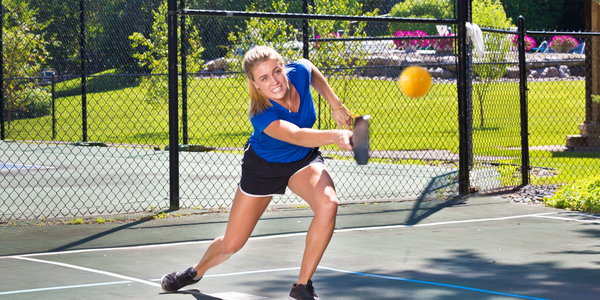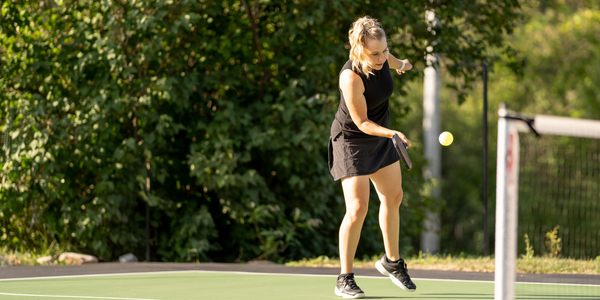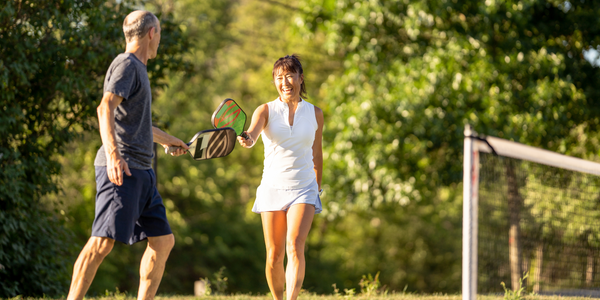Exceptional pickleball footwork is pivotal for excellent play. Proper footwork not only maximizes your reach and minimizes wasted movement but also positions you optimally to make successful shots.
This guide delivers comprehensive insights and tips on mastering pickleball footwork, leading you to higher levels of play and increased enjoyment of the game.
I. Importance of Proper Footwork:
Understanding the fundamental importance of good footwork can significantly enhance your performance on the court.
1. Enhanced Mobility:
Good pickleball footwork is essential for moving faster and more efficiently across the court. It allows you to reach more balls and execute better shots, ultimately elevating your game.
2. Improved Balance and Stability:
Proper foot positioning is crucial for maintaining balance and stability during play. Learning how to position your feet correctly can prevent falls and ensure powerful and accurate shot-making.
II. Basic Footwork Techniques:
Mastering the basics is the first step in improving your pickleball footwork.
1. The Ready Position:
Start each point in a neutral, balanced stance—feet shoulder-width apart, knees slightly bent, and weight on the balls of your feet. This position allows you to move quickly in any direction, responding swiftly to your opponent’s shots.
2. Split-Step:
The split-step is a small, timed hop that occurs as your opponent hits the ball. It primes your muscles for quick movement, enabling you to react efficiently to the shot.
III. Lateral Movement:
Effective side-to-side movement is critical for covering the court effectively.
1. Shuffle Step:
Employ the shuffle step for lateral movements in your pickleball footwork. Keep your toes pointed forward and shuffle your feet without crossing them, maintaining stability and speed.
2. Crossover Step:
Use the crossover step to cover more ground laterally. Push off with the foot opposite to the direction you’re moving, which allows for quick and extensive reach.
IV. Forward and Backward Movement:
Quick and balanced movement forwards and backwards can dramatically impact your ability to control the court.
1. Quick Steps:
Take small, quick steps when moving forward or backward. This maintains your balance and keeps you ready to make the next shot.
2. Proper Weight Distribution:
Keep your weight slightly forward and stay on your toes. This posture ensures optimal movement both forwards and backwards, keeping you agile and responsive.
V. Positioning for Different Shots:
Your ability to move effectively to different court positions can define your defensive and offensive strategies.
1. Moving to the Non-Volley Zone:
Move quickly and with agility to the net, using small steps to ensure you remain stable and prepared to volley.
2. Defensive Positioning:
When moving back into a defensive position, use quick backward steps. Staying on your toes and ready allows you to respond effectively to aggressive shots from your opponent.
VI. Drills for Improving Footwork:
Regular drills can enhance your agility, speed, and coordination, all of which are essential for superior pickleball footwork.
1. Ladder Drills:
Practice fast-paced footwork with ladder drills to improve your foot speed, agility, and coordination—critical for quick directional changes.
2. Cone Drills:
Set up cones to practice navigating around them. This improves your ability to change directions quickly and accurately.
3. Shadow Drills:
Perform shadow drills by mimicking game movements. This practice enhances your footwork without the ball, focusing on movement patterns and speed.
VII. Common Mistakes and Corrections:
Being aware of common footwork errors can help you adjust your practice to avoid them.
1. Avoid Flat Feet:
Always stay on your toes, especially when preparing for the next move. This ensures quicker and more agile movement across the court.
2. Avoid Overstepping:
Focus on taking small, controlled steps. This prevents overreaching and helps maintain your balance, making it easier to prepare for your next shot.
VIII. Importance of Regular Practice:
As the old saying goes, “practice makes perfect.” When it comes to pickleball footwork, this is especially true.
1. Regular Practice:
Commit to regular practice sessions focused on footwork. This consistency will help develop muscle memory and fine-tune your movements, allowing you to navigate the court with precision and ease.
2. Professional Assessment:
Consider getting your footwork assessed by a professional coach. Personalized feedback can pinpoint specific areas for improvement that you might overlook on your own. This guidance can be instrumental in advancing your pickleball skills.
3. Embracing Feedback:
Stay open to continuous learning and feedback from playing and watching others. Observing skilled players can offer insights into effective footwork strategies and inspire new techniques to incorporate into your own practice.
4. Integration into Game Play:
Apply these footwork drills and techniques consistently in your game scenarios. The real test of effective footwork is how well it translates into actual play, improving your reach, reaction time, and ability to recover between shots.
Elevating Your Game Through Superior Footwork
The journey to excellent pickleball footwork is ongoing and requires dedication and attention to detail. By following this guide, you've gained valuable insights into the fundamental movements and techniques that form the foundation of top-level play.
With diligent practice and a focus on continuous improvement, your footwork can transform your overall game, making you a formidable presence on any pickleball court. Harness these skills, enjoy the process, and watch as your game reaches new heights of competency and enjoyment.


